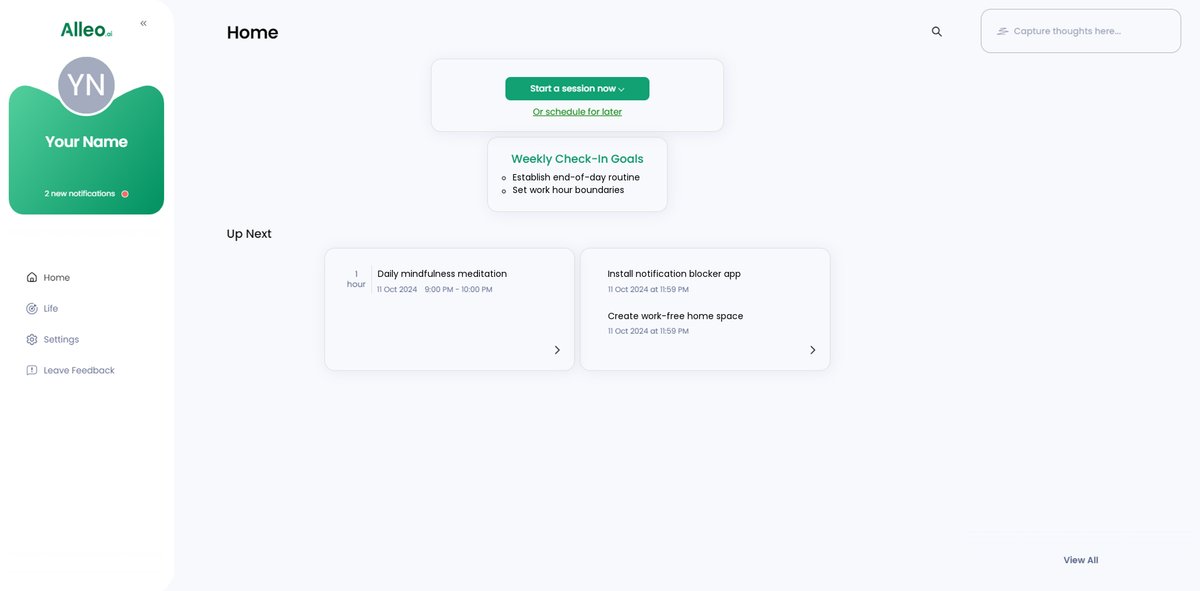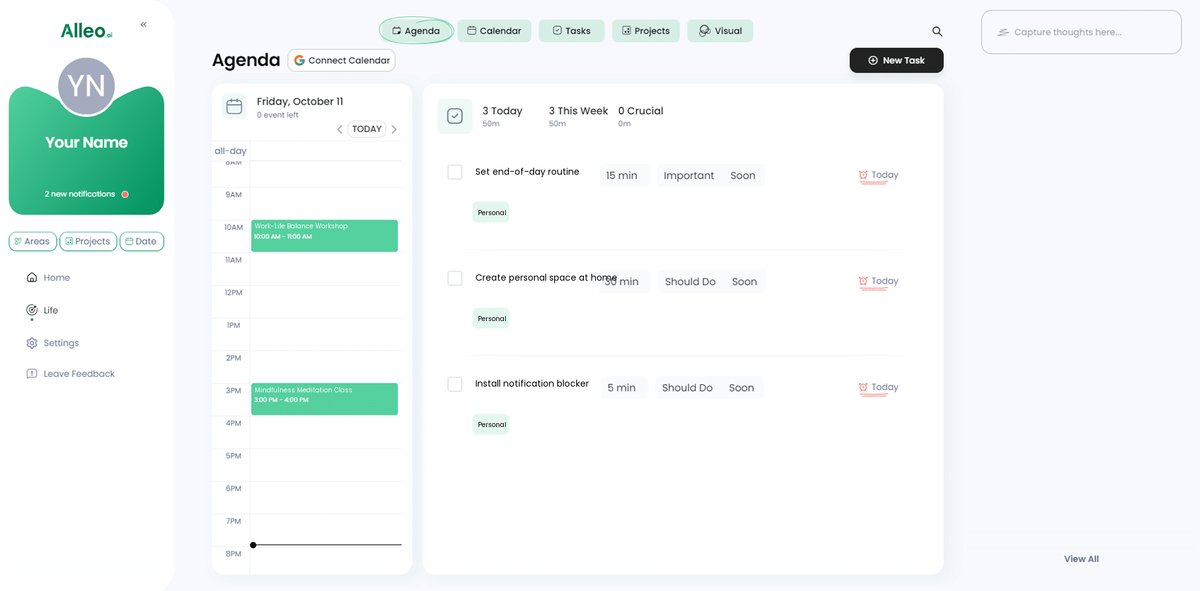The Ultimate Guide: How Professionals Can Unplug from Work During Off-Hours
Do you find yourself constantly checking emails and staying connected to work, even during personal time? This struggle with unplugging from work after hours is a common challenge for many professionals.
As a life coach, I’ve helped many professionals navigate these challenges. In my experience, it’s crucial to establish boundaries to maintain a healthy work-life balance and practice effective time management techniques.
In this article, you’ll discover proven strategies to unplug from work during off-hours. These tips can help you reduce stress, prevent burnout, and improve your overall well-being through proper stress management and relaxation strategies.
Let’s dive in to explore productivity tips and career wellness practices that will aid you in unplugging from work after hours.
The Pressure of Staying Connected
In the legal profession, the pressure to stay connected is immense. The demands of clients and the constant influx of emails can make it difficult to unplug from work after hours. Effective time management techniques are crucial for professionals in this field.
Many lawyers struggle to carve out personal time, leading to increased stress and burnout. Implementing stress management strategies and prioritizing work-life balance is essential for career wellness.
I often see clients benefit from setting clear boundaries. However, failing to disconnect can result in reduced productivity and overall dissatisfaction. A digital detox can be a valuable tool for burnout prevention.
The high-pressure environment of the legal field makes it crucial to address this issue of unplugging from work after hours.
Without proper boundaries, personal time is continuously encroached upon. This constant connectivity can lead to a lack of relaxation and mental fatigue. Focusing on mental health for professionals is vital in this context.
That’s why it’s essential to take proactive steps to achieve a healthy work-life balance. Setting boundaries at work and exploring relaxation strategies can significantly improve productivity and overall well-being.
Key Strategies for Unplugging from Work
Overcoming the challenge of unplugging from work after hours requires a few key steps. Here are the main areas to focus on to make progress with your work-life balance.
- Establish a Clear End-of-Day Routine: Set a specific time to stop working and stick to it, supporting your time management techniques.
- Set Communication Boundaries with Colleagues: Inform colleagues of your work hours and use email auto-responders to aid in setting boundaries at work.
- Create a Dedicated Personal Space at Home: Designate a work-free zone and personalize it for effective stress management.
- Use Apps to Block Work Notifications After Hours: Install apps that block work-related notifications during personal time, promoting a digital detox.
- Practice Mindfulness or Meditation Techniques: Dedicate a few minutes each day to mindfulness meditation, enhancing your mental health as a professional.
- Schedule Enjoyable Activities for After Work: Plan at least one enjoyable activity each evening as part of your relaxation strategies.
Let’s dive into these productivity tips for unplugging from work after hours and preventing burnout!
1: Establish a clear end-of-day routine
Establishing a clear end-of-day routine is essential for effectively unplugging from work after hours.
Actionable Steps:
- Set a specific time each day to stop working and stick to it, improving work-life balance.
- Create a ritual to signal the end of the workday, such as shutting down your computer and tidying your workspace, as part of your digital detox.
- Plan a brief activity to transition from work mode, such as a short walk or reading a book, as a stress management technique.
Explanation: Creating a clear end-of-day routine helps you mentally transition out of work mode and aids in unplugging from work after hours.
This practice reduces stress and improves relaxation, leading to better sleep and overall well-being, which are crucial for burnout prevention.
According to Upheal, establishing end-of-day rituals can significantly enhance your ability to disconnect and focus on personal time, supporting mental health for professionals.
These steps can set the stage for a healthier work-life balance, ensuring you have time to recharge before the next workday and practice effective time management techniques.

2: Set communication boundaries with colleagues
Setting communication boundaries with colleagues is crucial for maintaining a healthy work-life balance and unplugging from work after hours.
Actionable Steps:
- Inform colleagues of your work hours and the times you will be unavailable for effective time management.
- Use email auto-responders to manage expectations about response times, aiding in digital detox.
- Suggest setting regular check-in meetings to address ongoing issues during work hours, supporting stress management.
Explanation: These steps help create clear boundaries, reducing the pressure to respond immediately and promoting career wellness.
This approach aligns with trends in the workplace, where setting boundaries at work is increasingly important for burnout prevention.
According to NatLawReview, managing communication expectations can significantly reduce stress and improve productivity.
By implementing these strategies, you’ll find it easier to unplug from work after hours and enjoy your personal time, enhancing your mental health as a professional.
3: Create a dedicated personal space at home
Creating a dedicated personal space at home is essential for maintaining a clear boundary between work and personal life, helping you in unplugging from work after hours.
Actionable Steps:
- Designate a specific area of your home as a work-free zone for improved work-life balance.
- Observe any changes in work-related stress when in this space.
- Personalize this space with items that promote relaxation and enjoyment, supporting your digital detox efforts.
- Note improvements in mood and relaxation levels.
- Commit to spending a certain amount of time in this personal space each day as part of your stress management routine.
- Track time spent and its effect on work-life balance.
Explanation: Establishing a personal space helps you mentally separate work from leisure, reducing stress and enhancing relaxation, which are key aspects of unplugging from work after hours.
This practice aligns with the growing emphasis on work-life balance and mental health for professionals.
For more insights, check out this article on Frontiers in Psychology, which discusses the importance of creating boundaries.
By taking these steps, you’ll create a sanctuary that fosters well-being and personal time, essential for burnout prevention and career wellness.

4: Use apps to block work notifications after hours
Using apps to block work notifications after hours can significantly help you maintain a healthy work-life balance and support unplugging from work after hours.
Actionable Steps:
- Install and configure apps that block work-related notifications during personal time, aiding in digital detox.
- Schedule specific times for checking emails or messages after hours, if necessary, as part of effective time management techniques.
- Use focus apps that promote mindfulness and relaxation during off-hours, contributing to stress management.
Explanation: Implementing these steps can reduce work-related interruptions and stress, supporting career wellness.
According to Tammy and Friends, disconnecting from work notifications can help realign priorities and create balance. This approach supports your goal of sustaining a clear boundary between work and personal life, essential for burnout prevention.
Key benefits of using notification-blocking apps for unplugging from work after hours:
- Reduced stress and anxiety, improving mental health for professionals
- Improved focus on personal activities, enhancing work-life balance
- Better sleep quality, contributing to overall productivity
These practical tips empower you to reclaim personal time and improve overall well-being by setting boundaries at work and implementing relaxation strategies.

5: Practice mindfulness or meditation techniques
Practicing mindfulness or meditation techniques can greatly aid in unplugging from work after hours and improving work-life balance.
Actionable Steps:
- Dedicate a few minutes each day to mindfulness meditation for stress management.
- Attend an online mindfulness workshop or course focused on digital detox.
- Use guided meditation apps to facilitate regular practice and enhance relaxation strategies.
Explanation: These steps help reduce stress and increase mental clarity, essential for maintaining work-life balance and preventing burnout.
According to HBR, mindfulness and meditation can significantly enhance focus and relaxation, contributing to better time management techniques.
By incorporating these techniques, you’ll find it easier to unplug from work after hours and enjoy personal time more fully, promoting career wellness and mental health for professionals.

6: Schedule enjoyable activities for after work
Scheduling enjoyable activities for after work is crucial to maintaining a healthy work-life balance and effectively unplugging from work after hours.
Actionable Steps:
- Plan at least one enjoyable activity each evening, such as hobbies or social events, to aid in digital detox.
- Join a local club or group related to a personal interest for stress management.
- Set weekly or monthly goals for personal activities and leisure as part of your time management techniques.
Explanation: Engaging in enjoyable activities helps reduce stress and improves your overall well-being. These steps allow you to focus on personal time and create a clear separation from work, promoting career wellness.
According to LinkedIn Pulse, employees who disconnect during off-hours report higher life satisfaction. By scheduling activities, you ensure time for relaxation and personal growth, which are essential for burnout prevention.
Examples of enjoyable after-work activities for unplugging from work:
- Reading a book or joining a book club
- Taking up a creative hobby like painting or writing as a relaxation strategy
- Engaging in physical exercise or sports for mental health as professionals
Taking these steps can help you effectively unplug and enjoy your personal time, improving your overall productivity and setting boundaries at work.

Partner with Alleo to Master Work-Life Balance
We’ve explored the challenges of unplugging from work after hours. Solving them can benefit your personal and professional life, helping you achieve better work-life balance and prevent burnout.
Did you know you can work directly with Alleo to make unplugging from work easier and faster?
Set up an account and create a personalized plan for digital detox and stress management. Alleo’s AI coach provides tailored support, just like a human coach, and you get a free 14-day trial with no credit card required.
Alleo will help you establish routines, set boundaries at work, and stay accountable with text and push notifications, improving your time management techniques and overall career wellness.
Ready to get started for free? Let me show you how to enhance your productivity and implement effective relaxation strategies!
Step 1: Logging in or Creating an Account
To begin your journey towards better work-life balance, Log in to your account or create a new one to access Alleo’s AI coach and start building your personalized plan for unplugging from work during off-hours.

Step 2: Choose Your Focus Area
Select “Improving overall well-being and life satisfaction” as your goal to address the work-life balance challenges discussed in the article. This focus will help you implement strategies to unplug from work, reduce stress, and enhance your personal time, leading to a more balanced and fulfilling life.

Step 3: Select “Personal” as Your Focus Area
Choose “Personal” as your focus area to address work-life balance issues and learn strategies for unplugging from work during off-hours, aligning with the article’s emphasis on creating boundaries and dedicating time for personal activities and relaxation.

Step 4: Starting a coaching session
Begin your journey with Alleo by scheduling an intake session, where you’ll discuss your work-life balance goals and create a personalized plan to help you unplug from work during off-hours.

Step 5: Viewing and Managing Goals After the Session
After your coaching session on work-life balance, check the Alleo app’s home page to view and manage the goals you discussed, helping you stay on track with unplugging from work during off-hours.

Step 6: Adding events to your calendar or app
Use the calendar feature in our AI coach app to schedule and track your enjoyable after-work activities, helping you maintain a healthy work-life balance and monitor your progress in disconnecting from work during personal time.

Wrapping It All Up: Achieving Work-Life Balance
As we come to a close, remember the importance of establishing boundaries to maintain a healthy work-life balance. Implementing these strategies can significantly enhance your well-being and productivity, especially when it comes to unplugging from work after hours.
I know it can be challenging, but small changes add up. Each step brings you closer to a more balanced life and effective stress management.
Take action now. Reflect on the time management techniques shared and start integrating them into your daily routine for better career wellness.
You can do this.
Lastly, consider partnering with Alleo for additional support in setting boundaries at work. Our product is designed to help you achieve your goals effortlessly, including maintaining a digital detox and preventing burnout.
You deserve a balanced life. Let’s make it happen together, focusing on relaxation strategies and mental health for professionals.